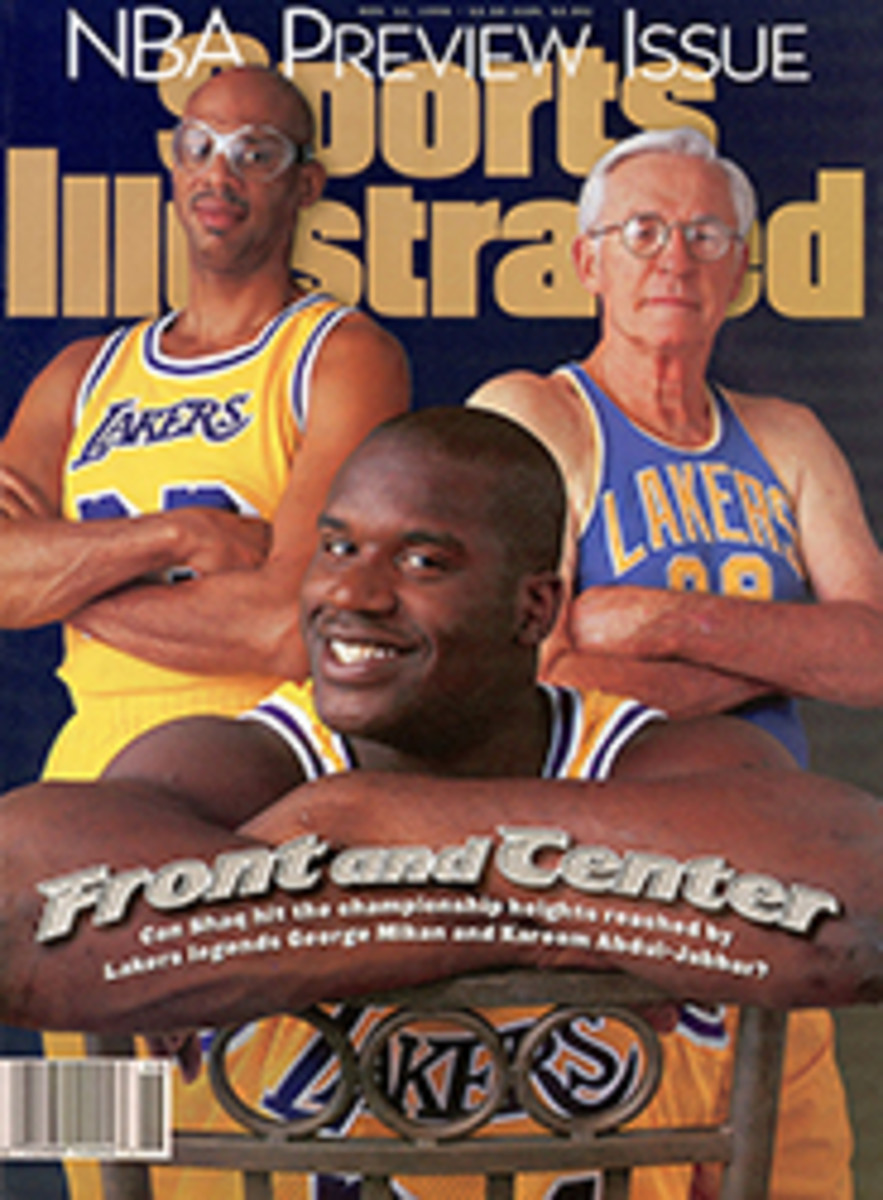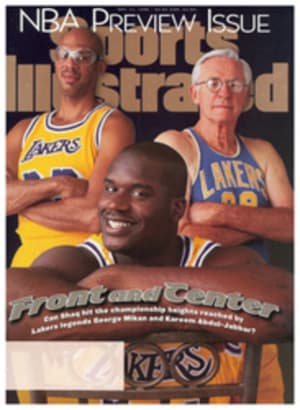
THE CHAMPION COAST TO COAST SAN FRANCISCO'S STEVE NEGOESCO HAS WON MORE GAMES THAN ANY OTHER COACH
Steve Negoesco stands alone on a cement step at the top of the
3,300-seat stadium that bears his name at the University of San
Francisco. This is how the stocky 71-year-old has coached soccer
for the past 35 years: from far above the field. "I like to give
my players freedom," he says. "If I always tell them what to do,
they will never be able to think for themselves."
Occasionally he trots down the stairs to share his insights with
assistants, but he always retreats to the place from which, he
believes, he can best dissect a soccer match. "You have to see a
three-dimensional game," says Negoesco. "When I am up on the
stairs, I get a pretty decent perspective of the field."
While standing on those steps on Oct. 24, 1995, Negoesco watched
the Dons beat Stanford 2-1 in overtime to earn his 500th
win--the most wins by a soccer coach in NCAA history. However,
Negoesco says, "the 500 games are just a number. I'm more
concerned with the quality of play." Through Oct. 31, this
year's San Francisco squad was 8-5-1, including a 2-0 upset win
over Cal State Fullerton; Negoesco's career mark is 511-124-64.
His seemingly distant coaching style suits his players just
fine. "Most coaches yell and scream and jump off the bench,"
says Dons forward Chris McDonald, a senior. "Steve says, 'This
is your team, we've practiced, you know what you need to do.'"
Negoesco's players say they respect his honesty. Four years ago
when the coach was recruiting McDonald, he didn't try to impress
the young player. "He took me to Mel's Diner, right down the
street," says McDonald, who had been wined and dined at fancier
places while visiting other schools. "He just said, 'Here's what
we have to offer you. If you like it, take it.' Steve was up
front; there wasn't any hidden agenda." McDonald watched
Negoesco coach a game that day and made up his mind on the spot.
When John Doyle was a freshman at USF in 1986, he quickly
learned about Negoesco's straightforward approach. Doyle was
having a hard time making the transition to college life, and he
wandered into the coach's office hoping to get some sympathy.
What he got instead was a dose of reality. "Steve said to me,
'You think you've got problems? Hey, I was in a concentration
camp,'" says Doyle. "When he said that, it put everything in
perspective."
Negoesco can be forgiven for what may seem like a lack of
compassion. Fifty-six years ago soccer was all about survival
for him. Although he was born in Jutland, N.J., in 1925, he was
sent by his father, a Romanian sea captain, to live with
relatives in Bucharest after the boy's mother died in 1926.
Negoesco was in Bucharest when the Nazis invaded in 1940. After
a scuffle with a German soldier over a girl, he was shipped to a
labor camp in Germany. Even at 15, soccer was the center of his
life; before being taken away, the first things he packed in
his canvas satchel were two deflated soccer balls and a pair of
cleats.
For 12 hours a day, six days a week, Negoesco did hard labor,
mostly digging ditches. But on Sundays he and other teenage
prisoners were allowed to play soccer. Occasionally some of the
German guards joined in, even helping the boys pat down the clay
fields before games. The guards took note of Negoesco's skill.
"A guard says to me, 'You're a beautiful player,'" says
Negoesco, smiling at the memory. "We had common ground there.
All of a sudden the war didn't exist anymore--not between the
two of us."
After four months in the camp Negoesco had lost 20 pounds and
contracted tuberculosis. He realized his only chance of survival
was to escape. On a spring afternoon in 1941, while guards who
had watched the soccer games turned their backs, Negoesco and
four other boys sneaked out of the camp. After hiding on trains
for more than a week, Negoesco made it back to Bucharest, where
he began playing soccer again and was chosen for the national
junior team. Eventually he was discovered, but because he was
such a good player, the authorities allowed him to continue.
Finally, in 1945 he returned to the U.S., where he was reunited
with his father.
Negoesco finished high school in New Jersey and later played
soccer at San Francisco, where as a junior in 1949 he became the
first West Coast player to earn first-team All-America honors.
The following season he married Mercedes Coronado-Arce. "She
lived a half a block from campus," says Negoesco. "Her father
bought a house, 2514 McAllister, right in back of my south
goal." Even on their wedding day Negoesco couldn't stay away
from a soccer field. After kissing his bride, he rushed back to
campus to play a game. "Before we got married, Steve told me
that soccer came first," Mercedes says with a laugh. "When I
first met him, he was playing soccer. So how could I ask him not
to play?" Their arrangement seems to have worked. The couple has
six children and 14 grandchildren.
Negoesco started out as a science teacher at San Francisco's
A.P. Giannini Middle School in 1957, but every afternoon when he
finished teaching he returned to USF to coach soccer. He was
named head coach in 1962. Scouting players during summer trips
to Europe (it helped that he speaks Romanian, Italian, French,
Spanish and a little German), Negoesco soon built USF into a
soccer power. Gradually the program also attracted students from
Africa and from Central and South America. Negoesco's teams
have won four national championships, in 1966, '75, '76 and '80.
A fifth national title, in '78, was stripped by the NCAA after a
Dons player was found to have been academically ineligible.
"I was one of the few Americans in the starting lineup, but
somehow we all found a common language," says Peter Arnautoff,
the Dons' goalie from 1975 to '78, who went on to play for the
U.S. national team and for the Oakland Stompers of the old North
American Soccer League.
In the past decade, strong soccer programs have been developed
at universities such as Santa Clara and UCLA on the West Coast,
Virginia on the East Coast and Indiana in the Midwest. Although
USF is no longer a dominant power--this year's squad ranks No.
22 nationally--Negoesco's influence on the game is still strong.
Lothar Osiander, a midfielder for Negoesco from 1966 to '68, is
a former coach of the U.S. national and Olympic teams and now
coaches Major League Soccer's L.A. Galaxy. Luis Sagastume,
another midfielder, who played with Osiander, is in his 18th
year as coach at the U.S. Air Force Academy, which ranks No. 4
in the country. And Doyle, a former defender on the U.S.
national and Olympic teams, plays for the San Jose Clash of
Major League Soccer.
Negoesco's influence can also be felt in San Francisco's youth
leagues, which he started in 1953. He once coached 11 youth
teams in one year. "He's Mr. Soccer in the area," says the
Reverend John Lo Schiavo, USF's chancellor. "A lot of our kids
grew up being coached by Steve."
"Steve cares so much about soccer and the [USF] program and
everything around it that he wants to do everything," says
McDonald. Indeed, after a game the most successful college
soccer coach in the U.S. can be found in the room behind his
office washing and drying uniforms. "My assistants would never
do laundry," he says as he slips a jersey onto a plastic hanger.
"But if you don't dry the shirts properly, the numbers get all
screwed up."
Those who know Negoesco well are not surprised that he spends
his time scrubbing grass stains out of uniforms. USF sports
information director Pete Simon remembers the first time he met
Negoesco, in the summer of 1982. The coach's hands were caked
with dirt. He had spent months raising money to build a new
soccer complex, and, Simon recalls, "he was digging the ditches
to put the stands in. A lot of people have stadiums named after
them. Steve actually built his."
COLOR PHOTO: BRAD MANGIN The Dons rarely lose at home on the field named after their coach, Negoesco, who helped build it. [Steve Negoesco]
B/W PHOTO: COURTESY OF UNIVERSITY OF SAN FRANCISCO Negoesco (top, a 1949 All-America) recruits players like Per Christian Larsen (15) from around the world. [Steve Negoesco as young man]
COLOR PHOTO: BRAD MANGIN [See caption above--Per Christian Larsen in game]

